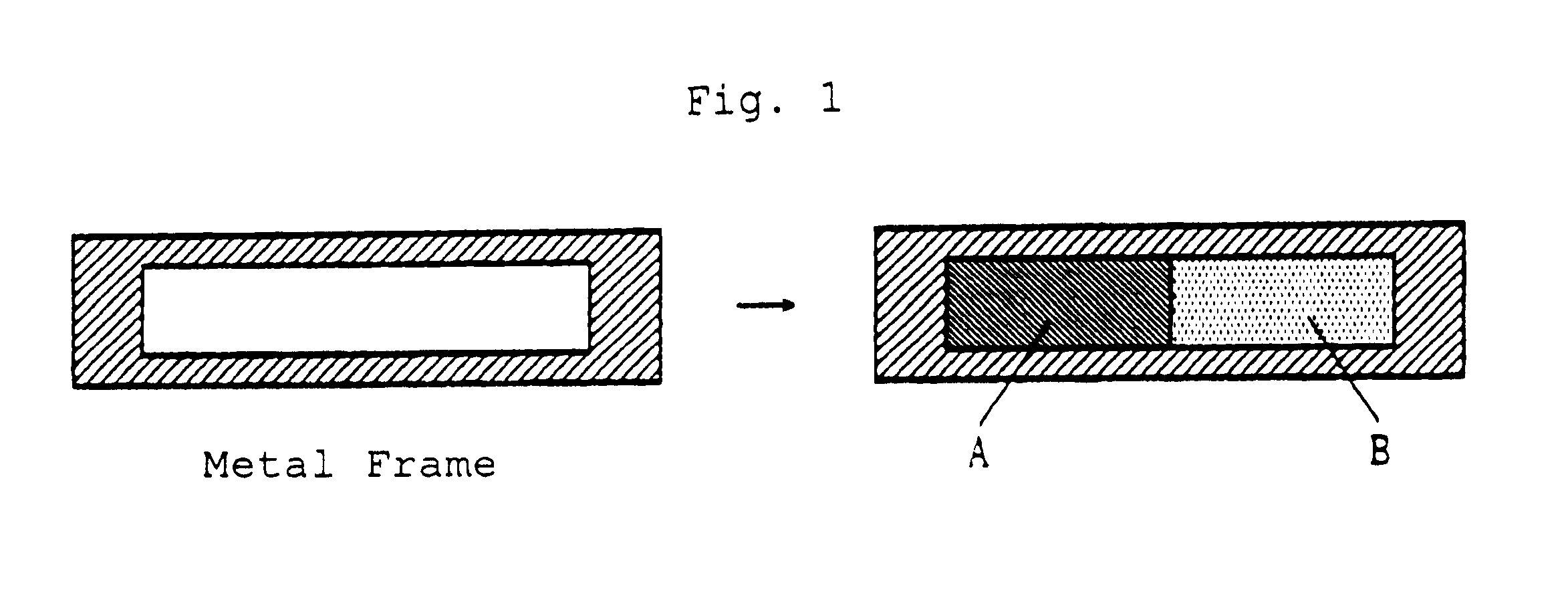Polyacetal composite and process for producing the same
- Summary
- Abstract
- Description
- Claims
- Application Information
AI Technical Summary
Benefits of technology
Problems solved by technology
Method used
Image
Examples
example
As shown in FIG. 1, a molded article of polyacetal resin A (A1 to A3) 4 mm thick 25 mm.times.60 mm was placed in a hole 4 mm thick 25 mm.times.120 mm of a metal frame in such a manner that one end of the molded article in a length direction was in contact with an inner wall of the metal frame, and thermoplastic resin or elastomer B (B1 to B8) (about 6.5 cm.sup.3 in case of B1 to B3, B5, and B7) was placed in such a manner that an end of the thermoplastic resin or elastomer B was in contact with the other end of the molded article of A in the length direction. These were hot-pressed at 170.degree. C. at a pressure of 600 kgf / cm.sup.2 for 10 minutes, and then cooled by pressing with a water-cooled press for further 1 minute, and the molded composite was taken out from the metal frame.
One end of the unit A and the other end of the unit B were held by hand respectively, and were pulled sideways, and adhesion strength was evaluated according to the following criteria. The test results in...
PUM
 Login to View More
Login to View More Abstract
Description
Claims
Application Information
 Login to View More
Login to View More - R&D
- Intellectual Property
- Life Sciences
- Materials
- Tech Scout
- Unparalleled Data Quality
- Higher Quality Content
- 60% Fewer Hallucinations
Browse by: Latest US Patents, China's latest patents, Technical Efficacy Thesaurus, Application Domain, Technology Topic, Popular Technical Reports.
© 2025 PatSnap. All rights reserved.Legal|Privacy policy|Modern Slavery Act Transparency Statement|Sitemap|About US| Contact US: help@patsnap.com


